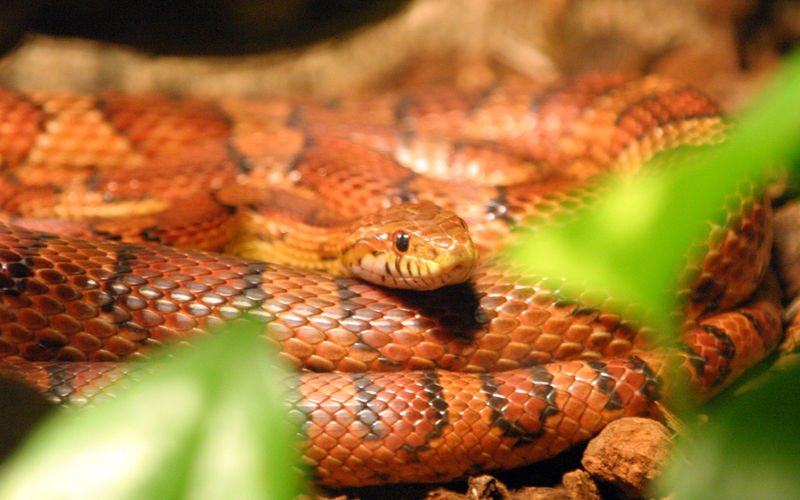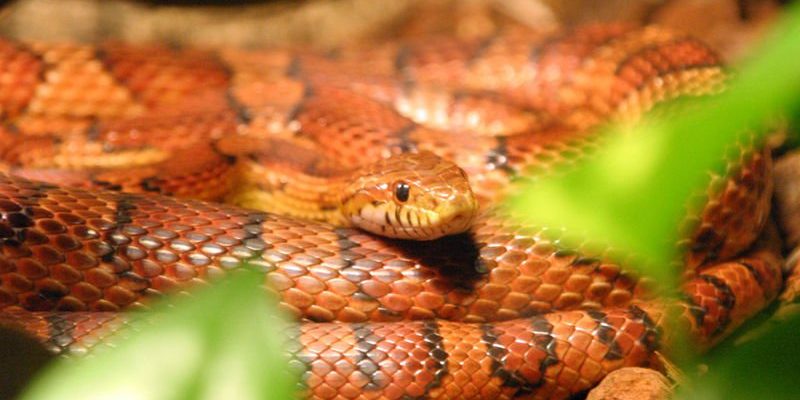
Corn snakes, scientifically known as *Pantherophis guttatus*, are non-venomous constrictors native to North America. They thrive in a variety of environments, from woodlands and fields to more humid areas like marshes. Just like any good puzzle, each piece plays a significant role, and in the grand scheme of nature, the corn snake’s role is multi-faceted. Let’s dive deeper into why these snakes are crucial to their habitats and what makes their existence so interconnected with the world around them.
Where Corn Snakes Live
Corn snakes are primarily found in the southeastern United States, but their range can extend to other areas as well. They prefer environments that provide a mix of cover and open space—think of places like overgrown fields, farms, and the edges of forests. These habitats are not just random choices; they offer essential resources that corn snakes need to survive.
You might be wondering, “What makes these locations ideal?” For starters, they provide ample opportunities for hunting. Corn snakes are proficient at blending into their surroundings, thanks to their beautiful patterns that mimic the colors of leaves and soil. This camouflage helps them stalk prey more effectively. Moreover, these habitats are usually rich in the small rodents and birds that make up a significant part of their diet.
In addition to hunting grounds, corn snakes also need safe places to hide from predators. This is where the tall grass, fallen logs, and rocky outcrops come into play. Each of these elements helps create a perfect balance—offering food, shelter, and safety, allowing corn snakes to thrive in their natural homes.
The Diet of Corn Snakes
What do corn snakes eat? Well, here’s the thing: they’re primarily carnivorous, and their diet mainly consists of small mammals, birds, and even the occasional lizard. Think of them as nature’s pest controllers. A corn snake can eat several mice in a week, helping to keep the rodent population in check. It’s a classic case of give and take, where one species’ survival supports the ecosystem’s health.
When hunting, corn snakes rely on their keen senses. They don’t have good eyesight, but they make up for it with an impressive sense of smell. They flick their tongues in and out, tasting the air to locate potential prey. Once they find a meal, they use their constricting abilities to subdue it before swallowing it whole. It’s remarkable how efficient they are. Watching a corn snake in action is like witnessing a well-rehearsed performance of survival.
Interestingly, corn snakes have a special relationship with their environment when it comes to food. By keeping rodent populations in check, they help prevent crop damage, which is beneficial for farmers and the ecosystem alike. In this way, corn snakes contribute to a healthy cycle of life that benefits various species, including humans.
Predators and Threats
Even though corn snakes are skilled hunters, they also have their share of enemies. Birds of prey, like hawks and owls, along with larger snakes and some mammals, see them as tasty snacks. Here’s where camouflage plays a crucial role again. By blending into their environment, corn snakes can avoid detection, giving them a better chance at survival.
However, it’s not just natural predators that pose a threat. Human activities, such as habitat destruction and urbanization, significantly impact corn snake populations. As fields are turned into cities or agricultural land, these snakes lose their homes and hunting grounds. Just think about it: if someone took away your favorite park, you’d feel lost too.
Another concern is the illegal pet trade. Corn snakes are often captured and sold, which not only reduces their numbers in the wild but can also lead to mismanagement of their care in captivity. We must protect these creatures by understanding their roles in nature and ensuring their habitats remain intact.
Reproduction and Lifespan
Corn snake reproduction is pretty straightforward. Mating typically occurs in the spring, and females lay clutches of about 10 to 30 eggs in early summer. Here’s where it gets interesting: the eggs hatch after about 60 days, and baby corn snakes are miniature versions of their parents, ready to start their independent lives.
In the wild, corn snakes can live around 6 to 8 years, but in captivity, with proper care, they can exceed 20 years. It’s a testament to how much our environment influences their lifespan. Healthy habitats lead to thriving populations, while those compromised by human impact can cut their lives short.
The way corn snakes reproduce and raise their young also highlights their role in the ecosystem. Baby snakes become part of the food chain themselves, supporting various predators and continuing the cycle of life. Each new generation maintains the delicate balance essential for their habitats to flourish.
The Importance of Corn Snakes in Ecosystems
Corn snakes play a vital role in maintaining the balance of their ecosystems. By controlling rodent populations, they help prevent overpopulation that can lead to various problems, such as disease or crop destruction. And while they may be small players in the grand scheme of things, their effects ripple throughout the food chain.
Moreover, corn snakes themselves serve as prey for larger animals. This relationship helps sustain those predators, ensuring their survival and allowing for a diverse ecosystem. If corn snakes were to disappear, it would create a domino effect, disrupting the balance and health of their habitat.
By understanding the significance of corn snakes, we can appreciate the intricate web of life surrounding us. The preservation of their habitats ensures not just their survival but the overall health of the ecosystems they inhabit. And that’s something we can all get behind.
Conservation Efforts and the Future
So, what can we do to help corn snakes thrive? The first step is awareness. Understanding their role in the ecosystem helps us appreciate why we must protect them. Conservation efforts focus on habitat preservation and education, empowering communities to support local wildlife and ecosystems.
Many organizations work tirelessly to protect natural habitats and promote sustainable practices. This includes creating safe spaces for corn snakes and educating people on their importance. Simple actions, like supporting wildlife-friendly initiatives or reducing pesticide use, can make a big difference.
Honestly, every little effort counts. Even if you’re not in a position to join a conservation group, spreading the word about the importance of corn snakes can spark interest in someone else. The more people understand their value, the more we can advocate for their protection.
In conclusion, the role of the corn snake in its natural habitat is vital. From controlling rodent populations to serving as prey for larger animals, these snakes are essential for maintaining ecological balance. By recognizing their importance and supporting conservation efforts, we can ensure that corn snakes continue to thrive for generations to come. Let’s work together to keep our ecosystems rich and diverse!

